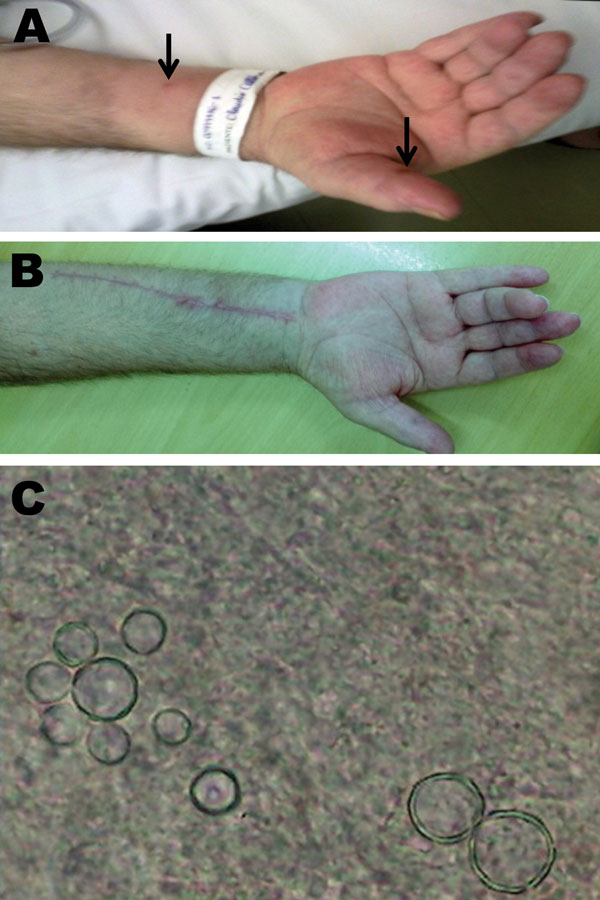Volume 18, Number 8—August 2012
Letter
Carpal Tunnel Syndrome with Paracoccidioidomycosis
Figure

Figure. . A) Edema and erythema of the flexor surface of the hand of patient with paracoccidioidomycosis, carpal tunnel syndrome, and flexor tenosynovitis, Brazil. Note a fistulous pustulous nodule in the right thumb and forearm (arrows) and flexor contracture of the fourth finger. B) Flexor surface of the hand and forearm after surgery. C) Paracoccidioides brasiliensis was directly identified on the thumb secretion, sputum, and flexor tenosynovectomy specimen by using a 10% potassium hydroxide preparation. This image was obtained from the thumb secretion. Note the characteristic multiple-budding yeast cells (pilot's wheel) with the well-defined refringent double wall.
Page created: July 20, 2012
Page updated: July 20, 2012
Page reviewed: July 20, 2012
The conclusions, findings, and opinions expressed by authors contributing to this journal do not necessarily reflect the official position of the U.S. Department of Health and Human Services, the Public Health Service, the Centers for Disease Control and Prevention, or the authors' affiliated institutions. Use of trade names is for identification only and does not imply endorsement by any of the groups named above.